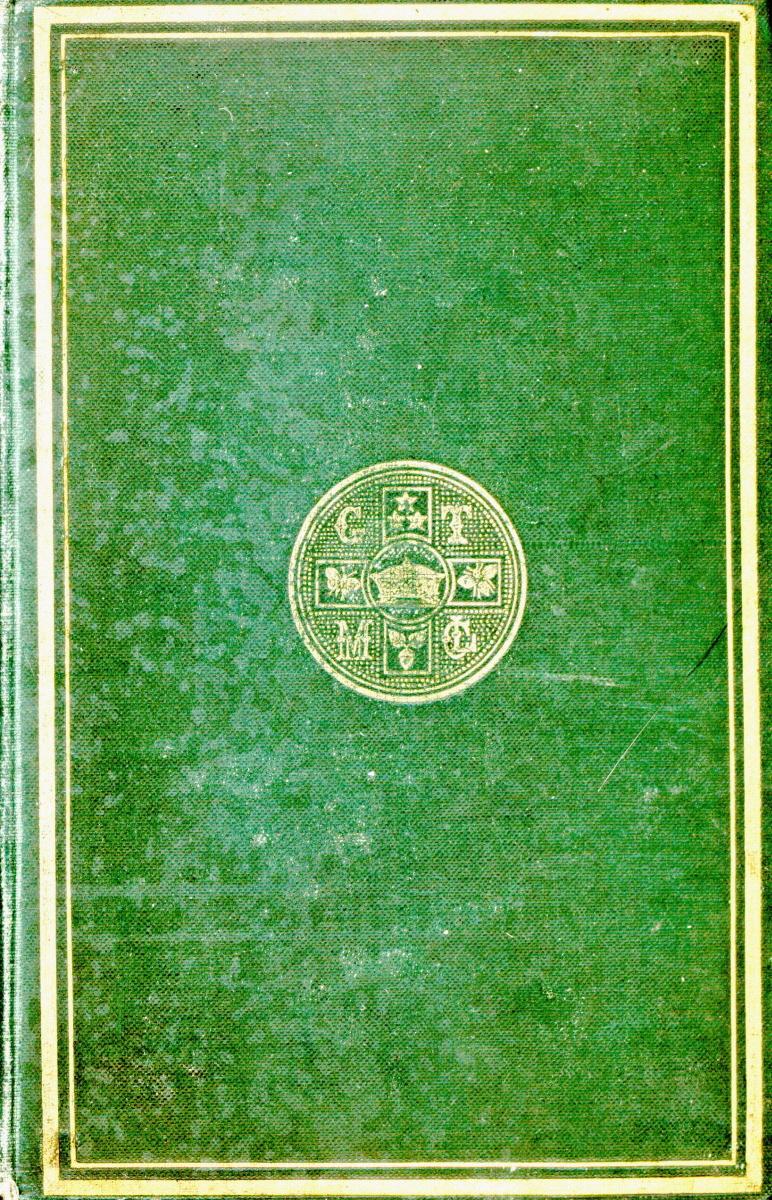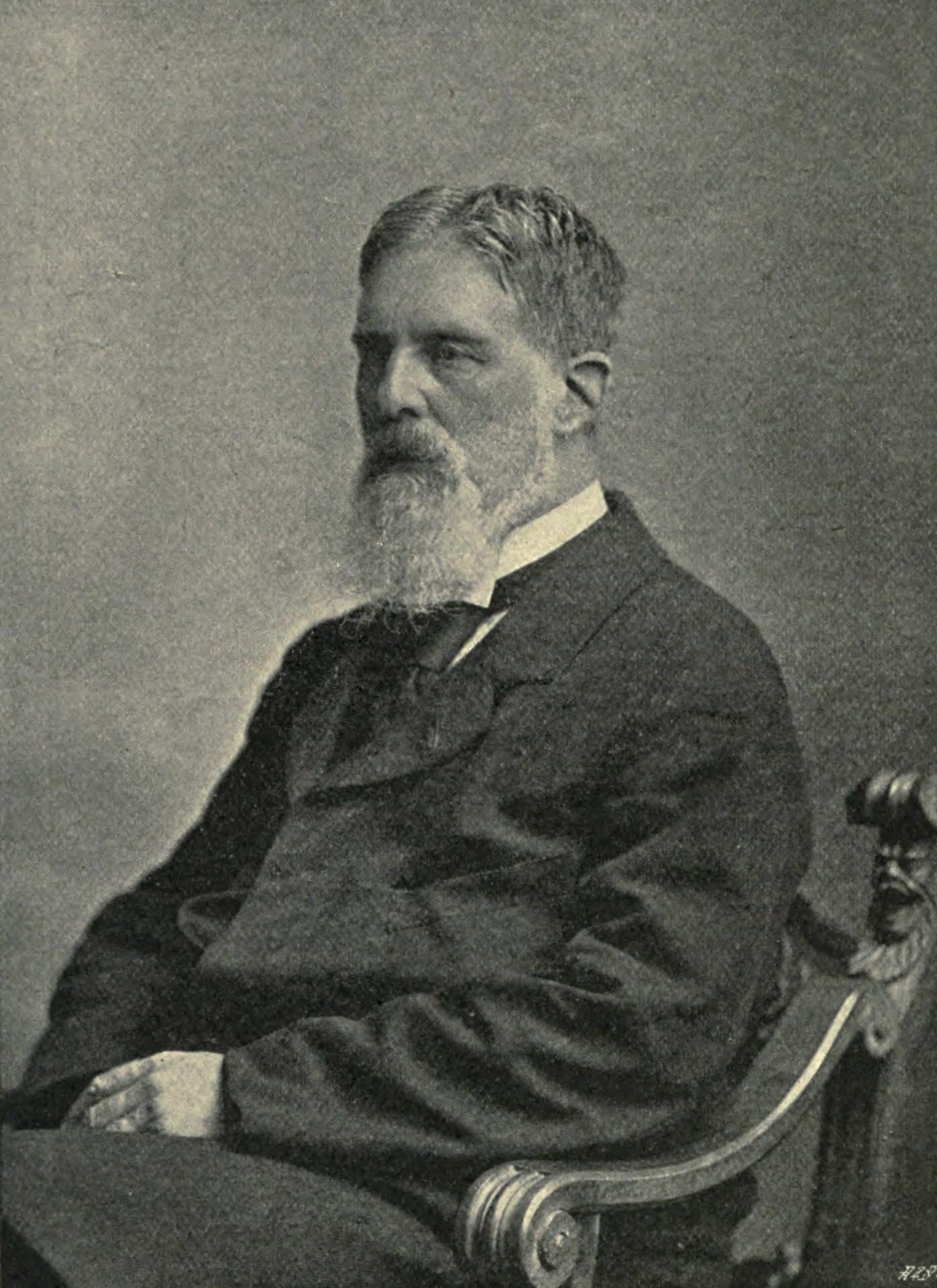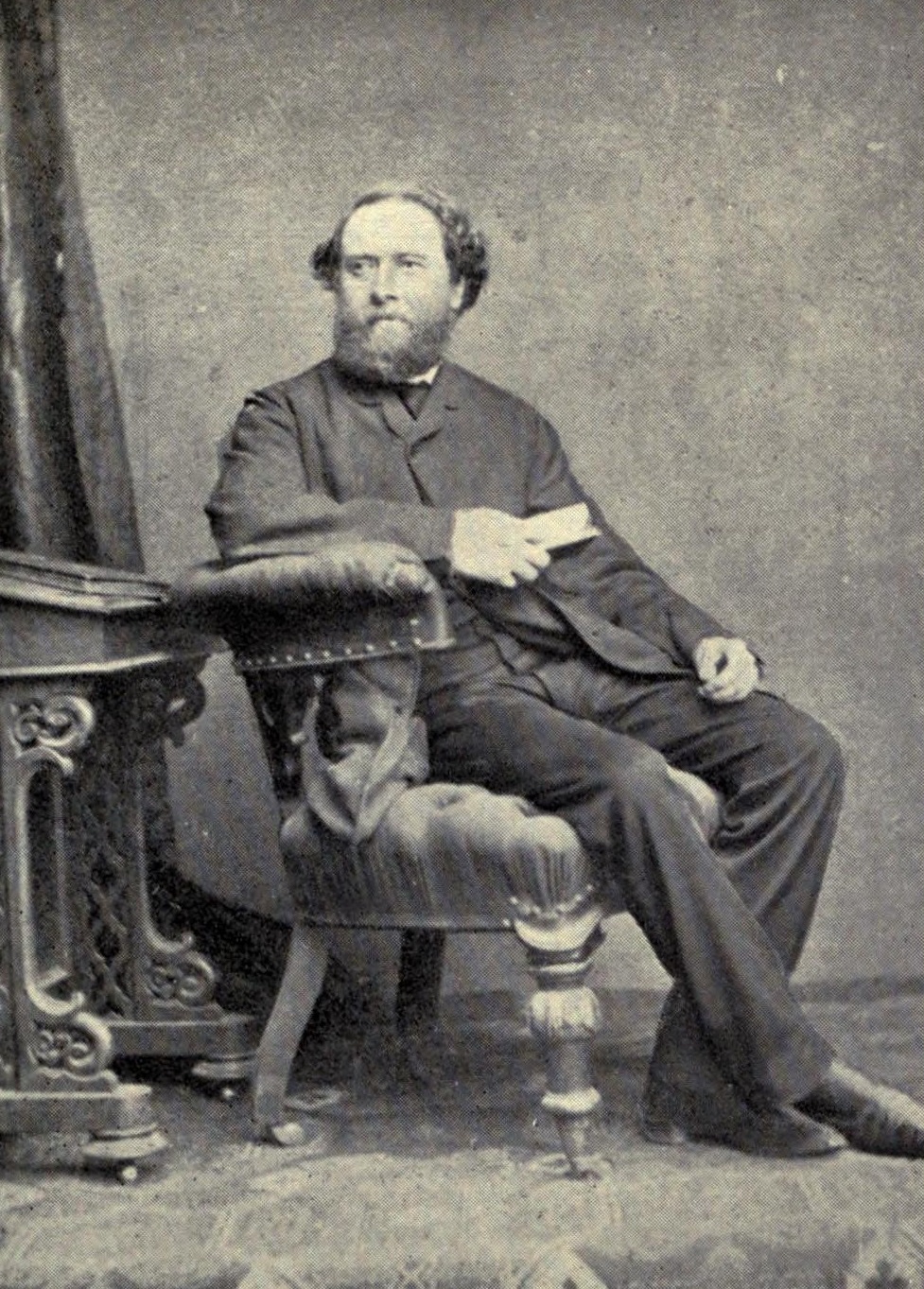|
Arthur O'Shaughnessy
Arthur William Edgar O'Shaughnessy (14 March 184430 January 1881) was a British poet and herpetologist. Of Irish descent, he was born in London. He is most remembered for his poem " Ode", from his 1874 collection ''Music and Moonlight'', which begins with the words "We are the music makers, / And we are the dreamers of dreams", and has been set to music by several composers including Edward Elgar (as '' The Music Makers)'', Zoltán Kodály, Alfred Reed and, more recently, 808 State ( ex:el: nephatiti) Aphex Twin ( Selected Ambient Works 85-92). Early life and herpetology In June 1861, at age 17, Arthur O'Shaughnessy received the post of transcriber in the library of the British Museum, reportedly through the influence of Sir Edward Bulwer Lytton. According to Sir Edmund Gosse, O'Shaughnessy was one of Bulwer Lytton's many bastard children. Two years later, he became a herpetologist in the museum's zoological department. From 1874 to his premature death, he described six new ... [...More Info...] [...Related Items...] OR: [Wikipedia] [Google] [Baidu] |
London
London is the capital and List of urban areas in the United Kingdom, largest city of England and the United Kingdom, with a population of just under 9 million. It stands on the River Thames in south-east England at the head of a estuary down to the North Sea, and has been a major settlement for two millennia. The City of London, its ancient core and financial centre, was founded by the Roman Empire, Romans as ''Londinium'' and retains its medieval boundaries.See also: Independent city#National capitals, Independent city § National capitals The City of Westminster, to the west of the City of London, has for centuries hosted the national Government of the United Kingdom, government and Parliament of the United Kingdom, parliament. Since the 19th century, the name "London" has also referred to the metropolis around this core, historically split between the Counties of England, counties of Middlesex, Essex, Surrey, Kent, and Hertfordshire, which largely comprises Greater London ... [...More Info...] [...Related Items...] OR: [Wikipedia] [Google] [Baidu] |
Specific Name (zoology)
In zoological nomenclature, the specific name (also specific epithet or species epithet) is the second part (the second name) within the scientific name of a species (a binomen). The first part of the name of a species is the name of the genus or the generic name. The rules and regulations governing the giving of a new species name are explained in the article species description. For example, the scientific name for humans is ''Homo sapiens'', which is the species name, consisting of two names: ''Homo'' is the " generic name" (the name of the genus) and ''sapiens'' is the "specific name". Historically, ''specific name'' referred to the combination of what are now called the generic and specific names. Carl Linnaeus, who formalized binomial nomenclature, made explicit distinctions between specific, generic, and trivial names. The generic name was that of the genus, the first in the binomial, the trivial name was the second name in the binomial, and the specific the proper term fo ... [...More Info...] [...Related Items...] OR: [Wikipedia] [Google] [Baidu] |
Palgrave's Golden Treasury
The ''Golden Treasury of English Songs and Lyrics'' is a popular anthology of English poetry, originally selected for publication by Francis Turner Palgrave in 1861. It was considerably revised, with input from Tennyson, about three decades later. Palgrave excluded all poems by poets then still alive. The book continues to be published in regular new editions; still under Palgrave's name. These reproduce Palgrave's selections and notes, but usually include a supplement of more recent poems. Christopher Ricks in 1991 produced a scholarly edition of the original ''Treasury'', along with an account of its evolution from 1861 to 1891, with inclusions and exclusions. Book I (Palgrave) William Alexander, 1st Earl of Stirling – Richard Barnefield – Thomas Campion – Samuel Daniel – Thomas Dekker – Edward de Vere, 17th Earl of Oxford – Robert Devereux, 2nd Earl of Essex – John Donne – Michael Drayton – William Drummond – W. Drummond of Hawthornden – Thomas ... [...More Info...] [...Related Items...] OR: [Wikipedia] [Google] [Baidu] |
Francis Turner Palgrave
Francis Turner Palgrave (; 28 September 1824 – 24 October 1897) was a British critic, anthologist and poet. Life He was born at Great Yarmouth, the eldest son of Sir Francis Palgrave, the (born Jewish) historian to his wife Elizabeth, daughter of the banker Dawson Turner. His brothers were William Gifford Palgrave, Robert Harry Inglis Palgrave and Reginald Palgrave. His childhood was spent at Yarmouth and at his father's house in Hampstead. At fourteen he was sent as a day-boy to Charterhouse; and in 1843, having in the meanwhile travelled extensively in Italy and other parts of the continent, he won a scholarship at Balliol College, Oxford. In 1846 he interrupted his university career to serve as assistant private secretary to Gladstone, but returned, to Oxford the next year, and took a first class in Literae Humaniores. From 1847 to 1862 he was fellow of Exeter College, and in 1849 entered the Education Department at Whitehall. In 1850 Palgrave accepted the vice- ... [...More Info...] [...Related Items...] OR: [Wikipedia] [Google] [Baidu] |
Kensal Green Cemetery
Kensal Green Cemetery is a cemetery in the Kensal Green area of Queens Park in the Royal Borough of Kensington and Chelsea in London, England. Inspired by Père Lachaise Cemetery in Paris, it was founded by the barrister George Frederick Carden.The Founding of Kensal Green Cemetery Accessed 7 February 2014 The cemetery opened in 1833 and comprises of grounds, including two conservation areas, adjoining a canal. The cemetery is home to at least 33 species of bird and other wildlife. This distinctive cemetery has memorials ranging from large s housing the rich and famous to many distinctive smaller graves and includes special areas dedicated to the very young. It has three cha ... [...More Info...] [...Related Items...] OR: [Wikipedia] [Google] [Baidu] |
Philip Bourke Marston
Philip Bourke Marston (13 August 1850 – 13 February 1887) was an English poet. Life He was born in London 13 August 1850, the son of John Westland Marston. Philip James Bailey and Dinah Maria Mulock were his sponsors, and the most popular of the latter's short poems, "Philip, my King," is addressed to him. At age three, Marston partially lost his vision due to the injudicious administration of belladonna (as a prophylactic against scarlet fever), potentially aggravated by an accidental blow. For many years he maintained enough vision to see, in his own words, "the tree-boughs waving in the wind, the pageant of sunset in the west, and the glimmer of a fire upon the hearth;" and this dim, imperfect perception may have been more stimulating to his imagination than either perfect sight or total blindness. He indulged, like Hartley Coleridge, in a consecutive series of imaginary adventures and in the reveries called up by music. His skills in verbal expression and melody were s ... [...More Info...] [...Related Items...] OR: [Wikipedia] [Google] [Baidu] |
John Westland Marston
John Westland Marston (30 January 1819 – 5 January 1890) was an English dramatist and critic. Life He was born at Boston, Lincolnshire, on 30 January 1819, was son of the Rev. Stephen Marston, minister of a Baptist congregation. In 1834, he was apprenticed to his maternal uncle, a London solicitor; but although he was not inattentive to the duties of the office after obtained a fair knowledge of law, literature and the theatre had much greater attractions for him. His evenings were devoted to the theatre and becoming acquainted with Heraud, Francis Barham, and other members of the group which gathered around James Pierrepont Greaves. He contributed to Heraud's magazine ''The Sunbeam,'' and himself became editor of a mystical periodical entitled ''The Psyche.'' Among its chief supporters were some wealthy ladies near Cheltenham, Through them he made the acquaintance of Eleanor Jane Potts, eldest daughter of the proprietor of ''Saunders's News-Letter,'' who had retired to Ch ... [...More Info...] [...Related Items...] OR: [Wikipedia] [Google] [Baidu] |
Ford Madox Brown
Ford Madox Brown (16 April 1821 – 6 October 1893) was a British painter of moral and historical subjects, notable for his distinctively graphic and often Hogarthian version of the Pre-Raphaelite style. Arguably, his most notable painting was ''Work'' (1852–1865). Brown spent the latter years of his life painting the twelve works known as '' The Manchester Murals'', depicting Mancunian history, for Manchester Town Hall. Early life Brown was the grandson of the medical theorist John Brown, founder of the Brunonian system of medicine. His great-grandfather was a Scottish labourer. His father Ford Brown served as a purser in the Royal Navy, including a period serving under Sir Isaac Coffin and a period on HMS ''Arethusa''. He left the Navy after the end of the Napoleonic Wars. In 1818, Ford Brown married Caroline Madox, of an old Kentish family. Brown's parents had limited financial resources, and they moved to Calais to seek cheaper lodgings, where their daught ... [...More Info...] [...Related Items...] OR: [Wikipedia] [Google] [Baidu] |
Dante Gabriel Rossetti
Gabriel Charles Dante Rossetti (12 May 1828 – 9 April 1882), generally known as Dante Gabriel Rossetti (), was an English poet, illustrator, painter, translator and member of the Rossetti family. He founded the Pre-Raphaelite Brotherhood in 1848 with William Holman Hunt and John Everett Millais. Rossetti inspired the next generation of artists and writers, William Morris and Edward Burne-Jones in particular. His work also influenced the European Symbolists and was a major precursor of the Aesthetic movement. Rossetti's art was characterised by its sensuality and its medieval revivalism. His early poetry was influenced by John Keats and William Blake. His later poetry was characterised by the complex interlinking of thought and feeling, especially in his sonnet sequence, ''The House of Life''. Poetry and image are closely entwined in Rossetti's work. He frequently wrote sonnets to accompany his pictures, spanning from '' The Girlhood of Mary Virgin'' (1849) and ''Astarte ... [...More Info...] [...Related Items...] OR: [Wikipedia] [Google] [Baidu] |
Pre-Raphaelite Brotherhood
The Pre-Raphaelite Brotherhood (later known as the Pre-Raphaelites) was a group of English painters, poets, and art critics, founded in 1848 by William Holman Hunt, John Everett Millais, Dante Gabriel Rossetti, William Michael Rossetti, James Collinson, Frederic George Stephens and Thomas Woolner who formed a seven-member "Brotherhood" modelled in part on the Nazarene movement. The Brotherhood was only ever a loose association and their principles were shared by other artists of the time, including Ford Madox Brown, Arthur Hughes and Marie Spartali Stillman. Later followers of the principles of the Brotherhood included Edward Burne-Jones, William Morris and John William Waterhouse. The group sought a return to the abundant detail, intense colours and complex compositions of Quattrocento Italian art. They rejected what they regarded as the mechanistic approach first adopted by Mannerist artists who succeeded Raphael and Michelangelo. The Brotherhood believed the Cla ... [...More Info...] [...Related Items...] OR: [Wikipedia] [Google] [Baidu] |
Songs Of A Worker
A song is a musical composition intended to be performed by the human voice. This is often done at distinct and fixed pitches (melodies) using patterns of sound and silence. Songs contain various forms, such as those including the repetition and variation of sections. Written words created specifically for music, or for which music is specifically created, are called lyrics. If a pre-existing poem is set to composed music in classical music it is an art song. Songs that are sung on repeated pitches without distinct contours and patterns that rise and fall are called chants. Songs composed in a simple style that are learned informally "by ear" are often referred to as folk songs. Songs that are composed for professional singers who sell their recordings or live shows to the mass market are called popular songs. These songs, which have broad appeal, are often composed by professional songwriters, composers, and lyricists. Art songs are composed by trained classical compo ... [...More Info...] [...Related Items...] OR: [Wikipedia] [Google] [Baidu] |
Epic Of Women
Epic commonly refers to: * Epic poetry, a long narrative poem celebrating heroic deeds and events significant to a culture or nation * Epic film, a genre of film with heroic elements Epic or EPIC may also refer to: Arts, entertainment, and media Films * ''Epic'' (1984 film) * ''Epic'' (2013 film) Gaming * ''Epic'' (game), a series of wargames * ''Epic'' (video game), a 1992 video game * ''Epic: Battle for Moonhaven'', a 2013 video game by Gameloft based on the film ''Epic'' (2013) * '' Epic Card Game'', a 2015 strategy card game by White Wizard Games Literature * ''Epic'' (Kostick novel), a 2004 novel by Conor Kostick * '' Epic Illustrated'', a 1980s anthology series published by Marvel Comics Music Albums * ''Epic'' (Blood on the Dance Floor album), 2011 * ''Epic'' (Borknagar album), 2004 * ''Epic'' (R. Kelly album), 2010 * ''Epic'' (Sharon Van Etten album), 2010 * ''Epic'' (Tang Dynasty album), 1998 Songs * "Epic" (Faith No More song), 1990 * "Epic" (Sandro Sil ... [...More Info...] [...Related Items...] OR: [Wikipedia] [Google] [Baidu] |







